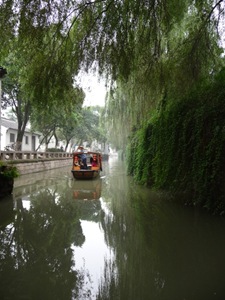 In between our visit to Shanghai and Beijing, we visited two “water township”, cities west of Shanghai which are built on man-made canals. Zhouzhuang is an ancient city whose inner section has only 8 streets; the remaining travel ways are canals. Souzhou has many canals but it is a bustling city of 6 million. The canals are a pleasant way to travel because the roads are totally congested. We hired boat and driver for a peaceful ride, observing the old homes along the shores of the Grand Canal, the world’s largest man-made waterway. Construction on the canal was begun in 486 BC and finished over the next one thousand years, linking the Yellow and Yangtze Rivers. Many of the buildings in this section date back five dynasties (to the 1200’s) and people are still living there.
In between our visit to Shanghai and Beijing, we visited two “water township”, cities west of Shanghai which are built on man-made canals. Zhouzhuang is an ancient city whose inner section has only 8 streets; the remaining travel ways are canals. Souzhou has many canals but it is a bustling city of 6 million. The canals are a pleasant way to travel because the roads are totally congested. We hired boat and driver for a peaceful ride, observing the old homes along the shores of the Grand Canal, the world’s largest man-made waterway. Construction on the canal was begun in 486 BC and finished over the next one thousand years, linking the Yellow and Yangtze Rivers. Many of the buildings in this section date back five dynasties (to the 1200’s) and people are still living there.
Just like it’s done in Venice, we were poled down the canal, and even serenaded. Our driver, a very tanned middle-aged man with an engaging smile, told us stories and facts about the city’s history and sang a traditional folk song. Rui and I clapped heartily and told him he had a beautiful voice (which he did) so he treated us to two more songs, one about the beautiful flowers of Suzhou (Rui translated part of it for me).
Later we had lunch in one of the little cafes along the canal — very fresh fish. They were swimming in a tank when we first arrived! For dessert I purchased a bag of fresh lychees from a street vendor. After peeling and eating several, I realized that they were sitting in water. Not knowing where the old woman had gotten the water, I chewed a Pepto Bismol tablet to help prevent the possibility of Traveler’s Diarrhea. (We did this several times throughout the trip when food or water was a bit suspect, and it seemed to work because we did not have any major gastrointestinal problems).
Suzhou has been famous for its silk products for centuries. At one of the silk factories, we saw how the silk worm cocoons are boiled in hot water and then the threads are wound onto spools to be used to make their quilts, scarves, shawls, handkerchiefs and other beautiful products. In the town market place, we bargained for a few scarves, and an embroidered wall hanging.
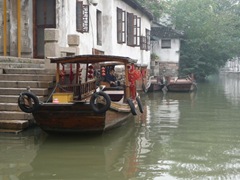
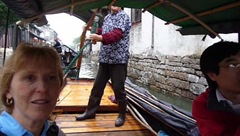
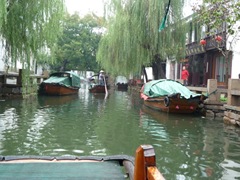
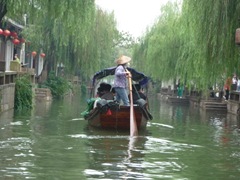
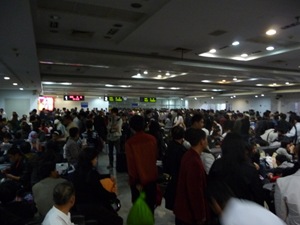
Recent Comments